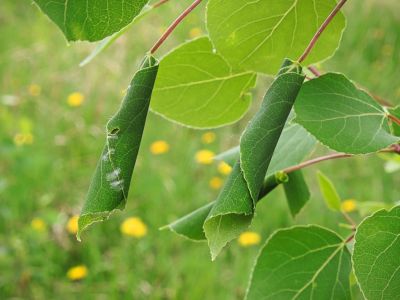What are Leafrollers?
Leafrollers are small caterpillars, reaching about an inch (2.5 cm.) in length, often with dark heads and bodies in colors ranging from green to brown. They feed inside nests made from leaves of their host plants, rolled together, and tied with silk. Once inside their leaf nests, leafrollers chew holes through the tissue, sometimes adding more leaves to the nest to keep themselves protected from predators. Leafroller damage is usually minor, but some years it may be quite severe. When there are lots of nests in a plant, defoliation may occur. High numbers of leafrollers may also feed on fruits, causing scarring and deformation. Plants affected by leafrollers include most woody landscape plants and fruit trees like pears, apples, peaches, and even coconuts.
Leafroller Control
A few leafrollers are nothing to worry about; you can easily cut the few damaged leaves from your plant and toss the caterpillars into a bucket of soapy water. Carefully pick through infested plants and those nearby to ensure you’ve gotten all the caterpillars, and check back weekly. Leafrollers don’t hatch all at once, especially if more than one species is present. When numbers are very high, you may need chemical help. Bacillus thuringiensis works as a stomach poison to feeding caterpillars and is extremely effective if applied to these pests and their food source while they’re young. It can be difficult to get sprays inside the rolled-up nests, but if you can’t simply cut the caterpillars out, this is the next best option if you wish to preserve the natural enemies of the leafroller caterpillars in your landscape.
